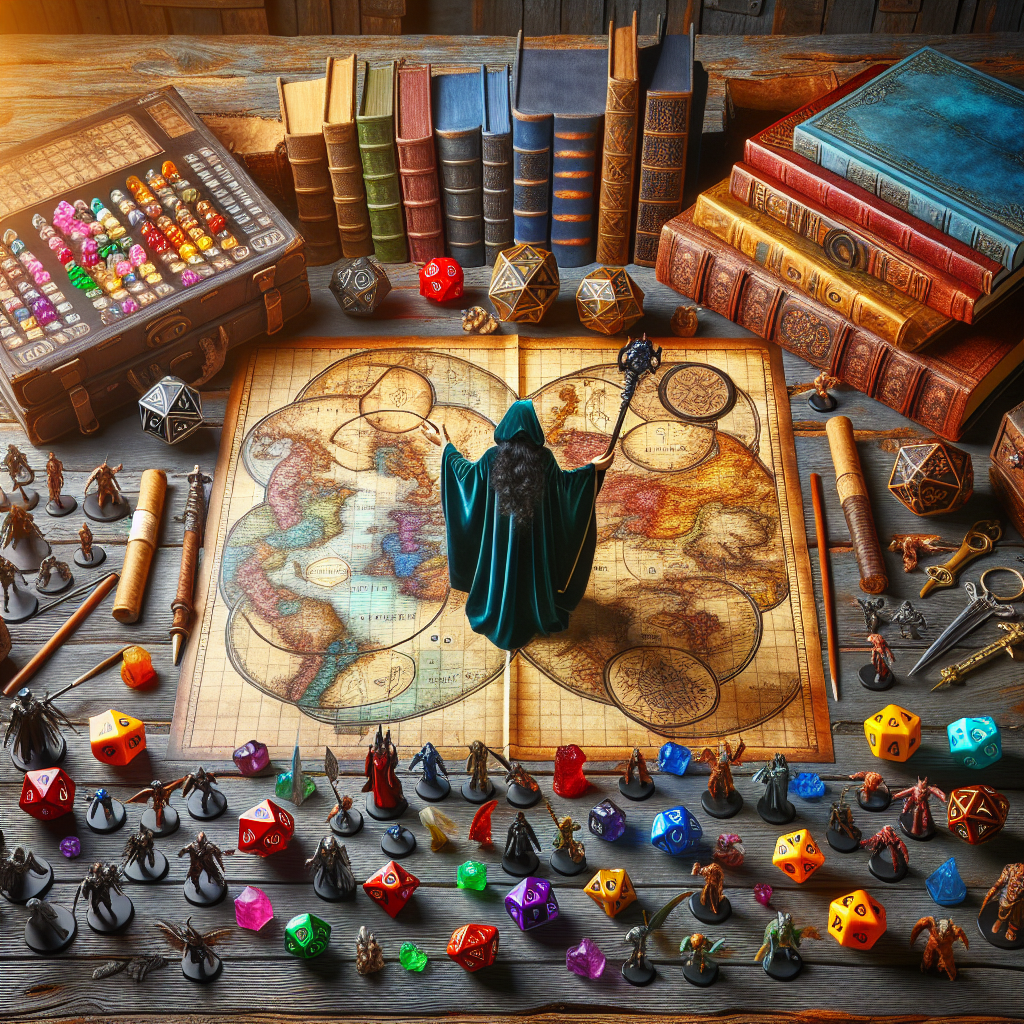Crafting Worlds: The Best Customizable Tabletop RPGs for Aspiring Storytellers
Tabletop role-playing games (TTRPGs) have been captivating players for decades, allowing them to immerse themselves in fantastical worlds, engage in collaborative storytelling, and explore the depths of their creativity. While traditional RPGs like Dungeons & Dragons often serve as entry points, many aspiring storytellers seek more customizable systems to craft unique narratives, settings, and characters. In this article, we’ll explore some of the best customizable tabletop RPGs that empower players to become the architects of their own worlds.
1. Powered by the Apocalypse (PbtA)
Overview:
Powered by the Apocalypse is a versatile system that can adapt to a wide range of genres, from fantasy and horror to sci-fi and modern-day drama. The framework emphasizes narrative over mechanics, allowing players to focus on collaborative storytelling and character development.
Customization:
PbtA games provide a modular approach to world-building. Each game under the PbtA umbrella has its own "moves" and mechanics, which can be mixed and matched. The system encourages players to create their own playbooks, moves, and even settings, making it an ideal choice for those looking to tailor their gaming experience.
Notable Titles:
Some of the most popular PbtA games include Apocalypse World, Monsterhearts, and The Sprawl, each presenting unique themes but grounded in the same adaptable mechanics.
2. FATE Core
Overview:
FATE Core is a flexible RPG system designed for narrative-driven gameplay. It emphasizes storytelling and character-driven drama while encouraging players to shape the narrative through their character’s Aspects—keywords that define what their character is about.
Customization:
FATE Core is built to be highly customizable, allowing players to create entire worlds, magical systems, and character concepts with ease. The game’s mechanics encourage collaboration, with players influencing the direction of the story based on their Aspects and the Fate Points they accumulate.
Notable Titles:
FATE Accelerated is a streamlined version for those who prefer shorter, simpler sessions, while FATE of Cthulhu focuses on cosmic horror, showcasing the system’s versatility across genres.
3. GURPS (Generic Universal RolePlaying System)
Overview:
GURPS is the Swiss Army knife of TTRPG systems, designed to be adaptable for any genre or setting imaginable. With a vast array of supplements, GURPS offers players the tools they need to create specific worlds, from high fantasy to gritty sci-fi.
Customization:
GURPS thrives on customization, allowing players to tailor everything from character creation to game mechanics. Its point-buy system enables players to define their characters’ strengths, weaknesses, and skills while allowing GMs to weave detailed settings and campaigns around their players’ creations.
Notable Titles:
Though GURPS can accommodate countless settings, official resources like GURPS Fantasy, GURPS Space, and GURPS Horror provide rich lore and guidance for world-building.
4. Savage Worlds
Overview:
Savage Worlds is known for its fast-paced gameplay and flexibility across genres. It utilizes a simple ruleset with a focus on action and storytelling, making it approachable for new players while still providing depth for veterans.
Customization:
Savage Worlds offers a modular experience, allowing GMs and players to craft their desired campaigns using a mix of existing settings or inventing their own. The game’s mechanics emphasize cinematic action and fast gameplay, which can be adapted to fit various narrative styles.
Notable Titles:
Popular settings include Deadlands: Reloaded, which combines Westerns with horror, and Savage Worlds of Flash Gordon, which blends sci-fi with adventure.
5. Möbius
Overview:
Möbius presents a unique take on TTRPG design through an innovative rules-light approach. It focuses on narrative and character arcs while using a card-based mechanic to resolve conflicts.
Customization:
Möbius encourages players to take the reins of world-building, presenting a collaborative experience where players can design settings, character traits, and story arcs together. The game’s flexibility and simplicity make it easy to tailor sessions to specific themes or ideas.
Notable Features:
The game’s card-based system allows for engaging storytelling and the integration of player choices, making it easy to adjust the narrative based on the flow of the game.
6. John Harper’s Blades in the Dark****
Overview:
Blades in the Dark focuses on scoundrels in a dark, haunted city in a Victorian-inspired universe. This game not only encourages players to create their own characters and factions but also interact with a rich, dynamic world.
Customization:
This game is rooted in narrative mechanics and player choice, allowing for deep customization of characters and heists. The game’s innovative mechanics, like the crew framework, enable players to build their own criminal organizations while influencing the unfolding story.
Notable Features:
The game’s unique mechanics, such as flashbacks and engagement rolls, promote a focus on storytelling and cooperation, allowing players to shape the world collaboratively.
Conclusion
For aspiring storytellers, customizable tabletop RPGs offer the freedom to forge unique narratives and build immersive worlds. Whether you’re drawn to the narrative-driven dynamics of Powered by the Apocalypse, the adaptability of GURPS, or the cinematic experience of Savage Worlds, each system provides a foundation for creativity. Exploring these games not only enhances your storytelling skills but also creates unforgettable experiences for you and your fellow players around the table. So gather your dice, embrace your imagination, and embark on an epic journey of world-building and collaborative storytelling!




